This month I’ve been gathering feedback from some of our visitors, to gain a deeper understanding of what people get out of their appointments at the Clothworkers’ Centre. As a student working on dress and feminism in nineteenth- and early twentieth-century British culture and literature I was thrilled to learn that I could select and see objects from the V&A’s stored textiles and fashion collection, and my trip to Clothworkers’ greatly enhanced my understanding of mainstream Victorian womenswear and contemporary dress reforms. But what’s motivated visitors this February, and how have they benefitted from seeing V&A objects up close?
Individual (or small group) appointments
The majority of our appointments are attended by individuals or small groups, who self-select objects from Search the Collections. Usually they see six objects, unless the pieces they’re interested in are unusually large. Sometimes requested items are too fragile for appointments, or unavailable for different reasons, but visitors can generally see their first choice objects, which are stored in the Study Room ahead of the appointments. Appointments are usually managed by Assistant Curators, who are available to discuss and handle objects.
You don’t need to meet any requirements to book one of these visits, and individual appointments are free. We have a wide range of visitors, including school and university students, academics, designers, and practitioners.
It was interesting, this month, to be visited by Inez Giles, who is affiliated with NAN (National Academy of Needlearts) and working on her Master Judge Certificate. Inez has “been aware [of the Centre’s] treasures for years,” and had visited previously. This time she focused on historical European whitework (white embroidery on a white ground). She said that the visit had aided her studies by giving her “[i]nsight and awareness of whitework techniques,” and she “[v]ery much appreciate[d] the opportunity to study pieces up close.”
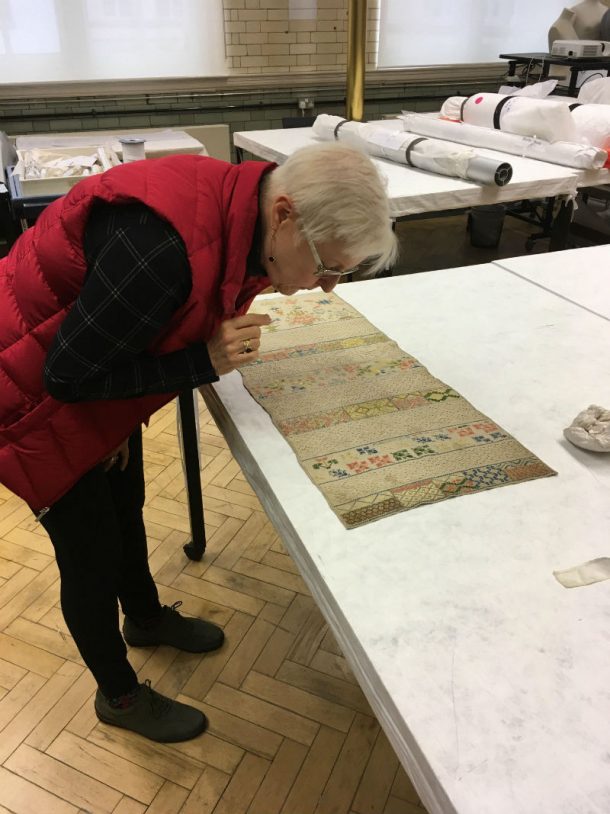
We were also visited by Chloe Wigston Smith, who teaches and researches English and Related Literatures at the University of York. She specialises in eighteenth-century literature and culture, and interdisciplinary work. Chloe’s publications include “Materializing the Eighteenth Century: Dress History, Literature, and Interdisciplinary Study,” an article published in Literature Compass in 2006, and Women, Work, and Clothes in the Eighteenth-Century Novel (Cambridge; New York: Cambridge University Press, 2013). She is currently working on another book project, and came to see various V&A-owned map samplers and embroidered maps, including the object pictured below which was made in England in 1794, as part of her research. Chloe found the visit useful, and was interested in the “range of levels of technique” that she saw. She also noted that these fascinating late eighteenth- and early nineteenth-century pieces, which unlike many contemporary examples of needlework look far beyond the domestic sphere, “were in much better condition than I expected.” Chloe hopes to return.
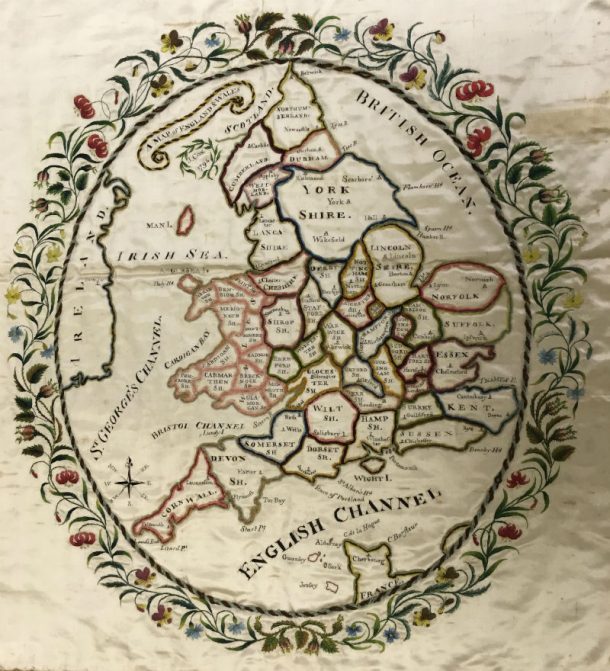
Group appointments
We’re visited by relatively large groups as well as individuals and groups of two or three. Groups usually see around eight objects. Various kinds of groups find such appointments beneficial. This month I gathered feedback from a group of students from Nottingham Trent University, to find out more about their appointment. I also got feedback from Interns from Suzie Turner Couture and Design Assistant Claire Knight who arranged this trip.
Tutors Kandy Diamond and Julie Sissons brought around thirty students from Nottingham Trent University to the Centre this month. The students, who viewed their objects in two groups, are taking a degree in Fashion Knitwear Design and Knitted Textiles. They looked at a range of pieces including unusual frame-kitted late eighteenth- or early nineteenth-century English pantaloons and a spectacular evening coat designed by Kaffe Fassett and hand-knitted by Zoe Hunt in Britain in 1979. Lily Puddefoot “loved [the visit],” and Rebecca Trifena Susanto, who plans on returning, was fascinated by how the garments had been made, and felt inspired by what she had seen.
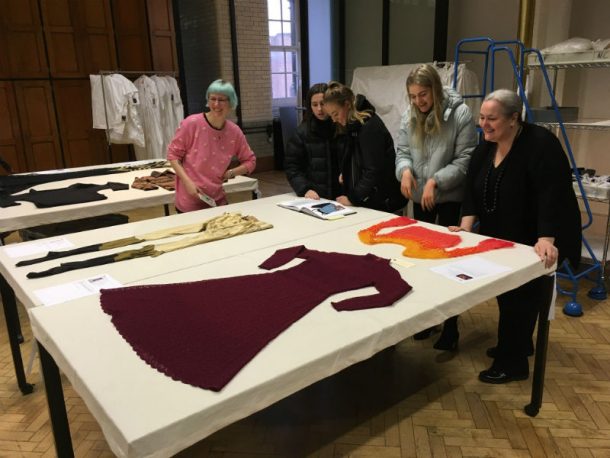
A couple of days after this visit the Centre welcomed a group from Suzie Turner Couture. Suzie Turner is a British designer who specialises in bespoke wedding gowns. The visit was connected with an internship that focuses on embroidery and embellishment, so the group were hoping to see some of our most elaborate pieces, including the British-made Norman Hartnell dress designed for Queen Elizabeth II’s state visit to Paris, France in 1957. Such pieces also tend to be amongst our most delicate, but where it was not advisable to bring the objects to the Study Room, we were, for the most part, able to show the selected garments in storage.
It seems that the Interns were particularly struck by the Hartnell gown mentioned above, and that they left the Centre feeling inspired. Design Assistant Claire Knight noted that the trip had “given me so many ideas for my own work.” She added that it had been “[w]onderful to be able to compare the couture we create to what was created many years ago.”
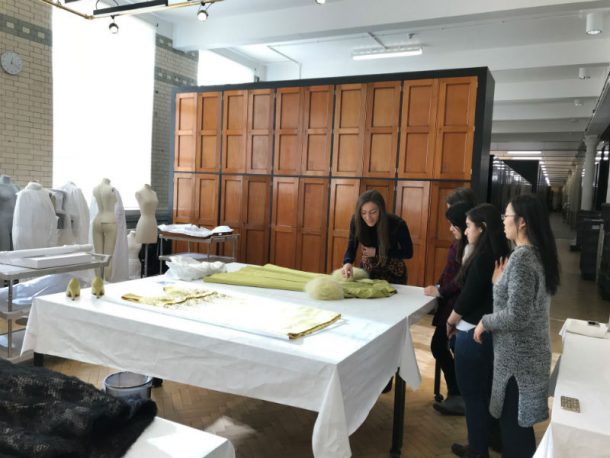
Other objects viewed at appointments this February
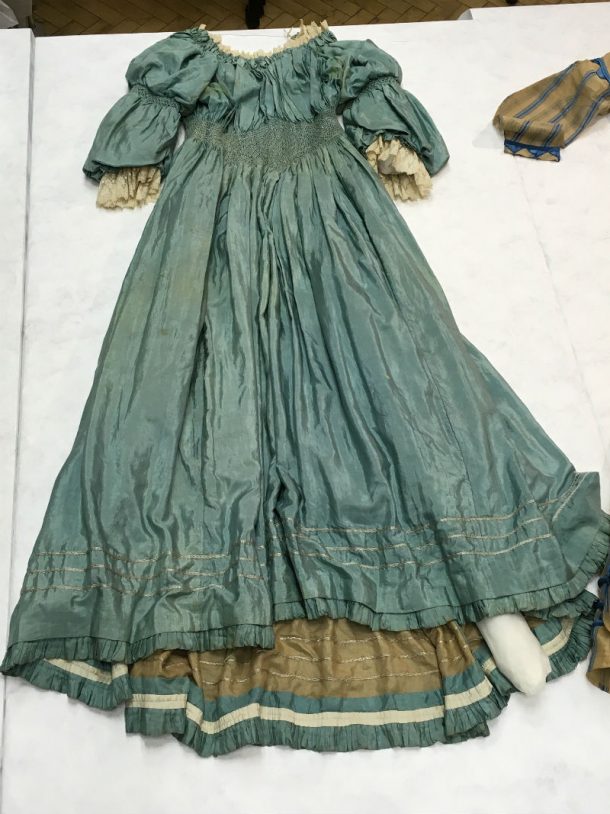
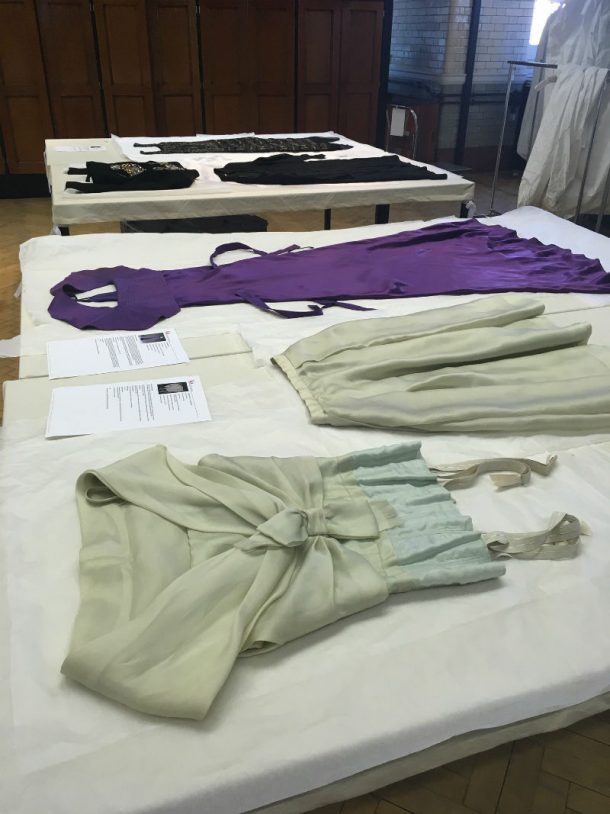
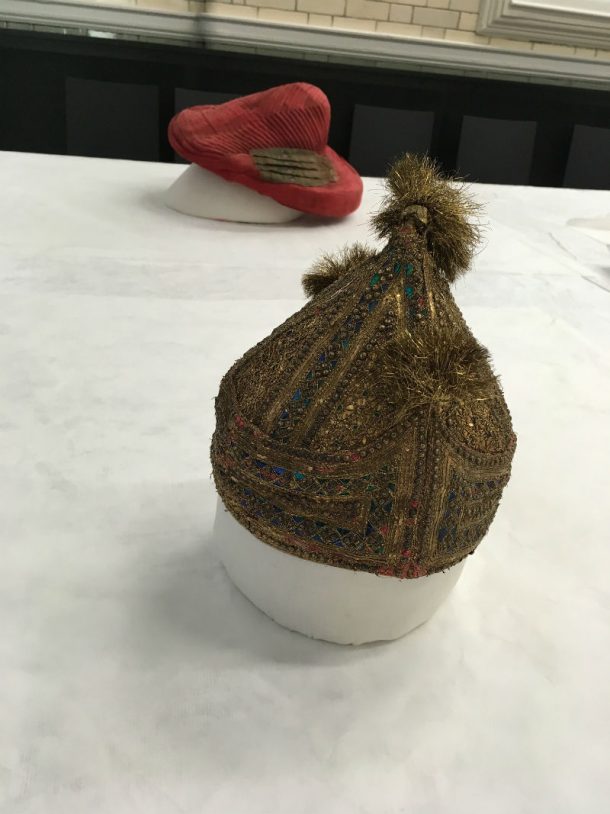
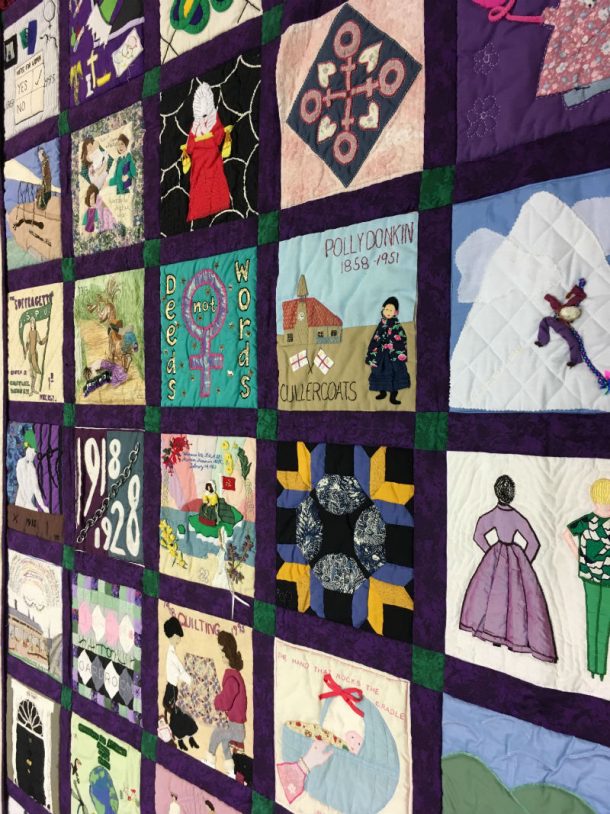
The Clothworkers’ Centre has had over 15,000 visitors since it opened in 2013, and is committed to facilitating public access to the Museum’s textiles and fashion collections. As this month’s visitors have made clear, there’s much to be gained from being able to select objects and see them up close. Often we can show visitors garments’ interiors too, and let people see pieces from a range of angles. If you think that you’d benefit from an appointment, do get in touch! Email us at clothworkers@vam.ac.uk.
This post was edited by the author on 29 January 2021 as part of work on sensitive terminology and topics.


